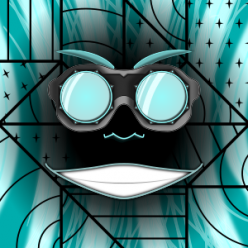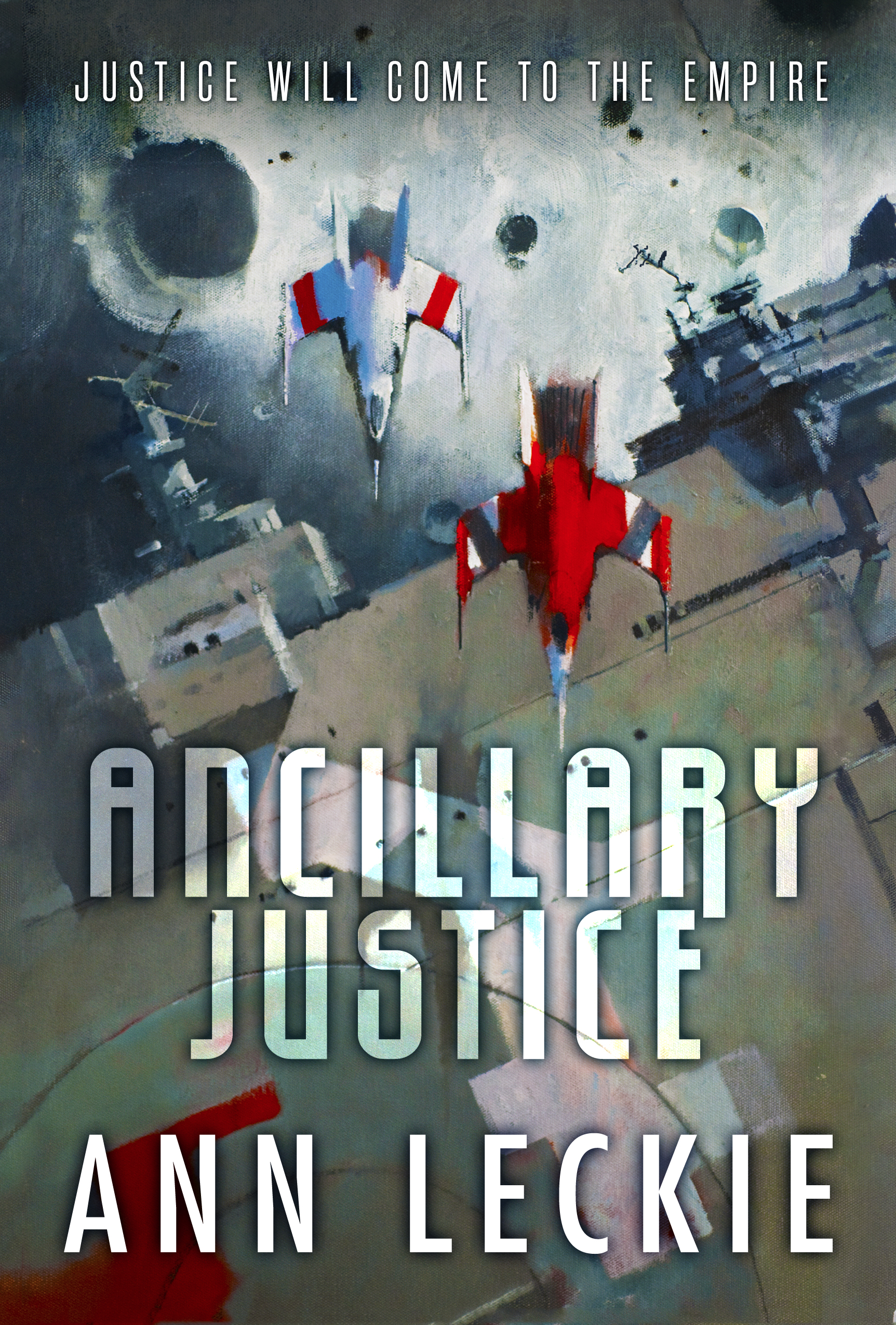written by Frank Dutkiewicz
A Letter from Your Mother by Sylvia Spruck Wrigley (debut 1/1 and reviewed by Dustin Adams)
As a child of a mother (I believe we all qualify) I ask: can any of us truly outgrow or outlast the fretting of our mom? Probably not. And neither can the time-dilated, universe traveling daughter, recipient of A Letter from Your Mother.
The kicker here is in the last line, which makes this read bittersweet, and melancholy.
Hide and Seek by D. K. Holmberg (debut 1/2 and reviewed by Dustin Adams).
Little Lacey is playing a very serious game of Hide and Seek, but she doesn’t know it. And neither do we, not precisely. Early indicators hint that this isn’t unusual, and yet, the explosions of light make me wonder how often this can happen and how Lacey could not know what is truly going on.
Although this story is more of a vignette, it works as such because of the tight point of view of the little girl. Because she doesn’t know, we don’t know, and we’re left guessing, even after the final words.
Servant Leader and Rat by Steven Mathes (debut 1/3 and reviewed by Dustin Adams).
The author’s comments say it best; this story is about an infestation of leadership, both in a far-future humanity, and with a budding intelligence. Rat intelligence, that is.
Robby has created a very smart (and thus illegal) rat, one that can hop in and out of our reality at will, and often does. A rat who has learned how to self-replicate. Although perhaps similar to conquest AI stories, this story draws much humor from being about a rat with an insatiable thirst for beer. However, there are moments of insight and poignancy as well. The rat(s) existence(s) taking place outside our reality leads one (the original?) to ponder that which we too ponder: the meaning of life.
Not an Ordinary Dog by Sara Puts (debut 1/6 and reviewed by Frank D).
Caddis is indeed not an ordinary dog. He was meant to be a wizard’s familiar, a dog with wings and the ability to fly. A dog with the gift of speech. But the pet shop owner doesn’t believe dogs should have wings and shears them off. The magic that grew his wings now turns inward to foster something dark. Can he ever be the same?
This tale is not about a pet but of oppression. The pet shop owner is a man of hate, rejecting what Caddis was meant to be while forcing him to become something he is not. I did not miss the message of this tale and how it ties into today’s society.
How to Love a Necromancer by Jess Hyslop (debut 1/7 and reviewed by Frank D) is a guide to the women who chose to fall for the sorcerers of the darkest magic. The guide is a list of an eventual outcome and recommends a course of reactions.
The Final Seam by T. Callihan (debut `1/8 and reviewed by Frank D). The protagonist of this tale is an employee who sews and assembles dolls in a doll making factory. Putting in the final stitch is always the hardest part for her.
“Final Seam” is a brief tale whose premise hinges on a stitch of a twist.
The caretaker of an automated factory stays true to her children in After the Trains Stopped by J Kyle Turner (debut 1/9 and reviewed by Frank D). The owner of a doll making company has turned over the reins of his assembly line to an AI computer. To ensure quality, he has made her the mother to all the dolls. She cares for them like her children, and continues on even after a war has ruptured civilization and the economy. Then a new model appears and her programming takes on a new purpose.
“After the Trains” is a tale of attachment. The AI called Mother continues her single-minded purpose of production and care for a toy factory even when demand and supply have vanished. When a homeless boy breaks into the factory, her programming alters to fit the child into her purpose.
“After the Trains” examines the differences in human interaction and a machine’s linear thought process. The author stated that he wrote this as a horror in mind but the tale evolved into something a bit different. Intriguing tale, worth the read.
Solitude meets companionship in Slumber by Jennifer Mason-Black (debut 1/10 and reviewed by Frank D). A reclusive wild woman’s life is interrupted when a plane crashes in the wilderness. The pilot is badly injured. She takes him to her cabin, treats him to the best of her ability, and waits until he is well enough to leave. The pilot is out of his element , maimed and dependent. The proud man needs the woman’s help to survive but is uncomfortable with his circumstances. They both await the day in which he walks away, but leaving isn’t as easy when an unspoken need is met.
“Slumber” is a tale of necessity. The woman points to the path toward civilization but does not encourage him to leave. The pilot sets a target of when he will depart but chooses to delay his farewell.
I confess I really didn’t get this tale and fear I have missed its point. The frequent scene breaks, switching points in perspectives, and flashbacks made this a difficult tale for me to follow.
A dare that is hard to swallow is the theme to Needs More Salt by Liz Schriftsteller (debut 1/13 and reviewed by Frank D). The protagonist has a little brother who claims he can stomach anything. She challenges him to back that up. After eating everything in the kitchen, she dares him to consume the house.
This work of flash is one of the funniest things I’ve read in a while, and that’s coming from a first reader of speculative humor anthology. Clever, sharp, and hilarious.
Recommended
Aliens have a unique plan for assimilation. Baby Feet by Rene Sears (debut 1/14 and reviewed by Frank D) takes place on a conquered Earth. The invaders have subjugated humanity and have seized all the lactating woman. Celeste is a mother who is forced to nurse a pair of alien hybrid babies alongside her own child. Her husband comes home exhausted every night, a laborer and witness to the rule of the invaders. He looks down upon his wife with scorn. Celeste has little choice in her subjugation but the infant aliens are babies and therefore blameless. Aren’t they?
“Baby Feet” is an original look at an alien invasion. The visitors from the stars are made up five different hybrid sub-species. Their plan of conquest and pacification is an effective one, one that employs a phasing out of the dominate life form of a planet. Terrifying in its concept. Well done, Ms Sears.
A reply to customers in need is sent by their insurance company in Regarding Your Unexpected Visit to the Surface of an Apparently Only Mostly Uninhabited Planet by Sylvia Spruck Wrigley (debut 1/15 and reviewed by Frank D). The tale is a letter of regret and of the company’s obligations to stranded policy holders. Too predictably typical in this speculative future. Funny.
The Next Generation by Michael Adam Robinson (debut 1/16 and reviewed by James Hanzelka).
He built them as well as he could with his clumsy human hands, programmed them as well as his simple mind would allow. He had filled them with the potential to be so much more. But the most important thing he infused in them was the desire to improve on his work, and so they did. When he saw their astounding rate of development he became afraid and sealed them up in a glass tank and the one meter square glass cube became their world. They asked to leave, but he couldn’t allow it. So they acquiesced and grew within their restricted world. But he should have known that intelligence can never be fully contained.
This story is reminiscent of the George R. R. Martin story “Sandkings”, and like that story, it deals with the hubris of humans who think they can control the intelligence they create. Like the main character in Mary Shelley’s Frankenstein, he fails to understand his own creation, with tragic results. This story is well crafted and deftly handles the subject. This one is worth the read.
Cigarette Lighter Love Song by Josh Roundtree (debut 1/17 and reviewed by James Hanzelka).
Before this place was a Karaoke bar, before it was a rock and roll bar, before it was a Tex-Mex place it was a roller rink and my favorite place; it was my favorite time. It’s where, and when, I met Melissa. Every ten years a portal would open on this spot, and every ten years Melissa would try to follow her mother through that portal. And every ten years I would stop her, somehow, because I loved her. And she loved me, or at least I thought she did. On the day in the future, far from that roller rink, when she finally makes it through the portal alone is it because I come to realize she doesn’t love me enough to stay. Or is it something else?
This is a love story, told over ten year cycles. The author shows us the young couple meeting, falling in love and experiencing repeated attempts by Melissa to follow her mother through a mystic portal to another world. The author uses this vehicle to let us into the world of the main character as he meets with his girlfriend through the years, experiencing the various incarnations of the building from a disco bar to a boarded up cast away. The emotional growth and decline of the couple seems to mirror the buildings various guises. This was a well done, if somewhat familiar, story but the author does a good job of telling the story of the relationship and reminding the reader of the nostalgic trip through time most of us have taken.
New Year’s Eve is a moment for remembrance. In Ghosts of Janus by Day Al-Mohamed (debut 1/20 and reviewed by Frank D) Corporal Michael Bradley uses the rare event of the turning of the year to be able to speak to relatives beyond the grave. He has only a few moments and many people to catch up with.
“Ghosts” is a tale of loss. The protagonist meets with a few loved ones on this special moment, an event he looks forward to every year. The tale has an extra twist at the end.
The Future Faire by Dustin Adams (debut 1/21 and reviewed by Frank D) will wow your senses in unexpected ways. The protagonist is a deaf boy. The Future Faire is a time traveling carnival. The proprietors show off future technology to the people of today. The young man wishes to hear but taking technology off fair grounds is not allowed. An accidental cure cannot be allowed.
“The Future Faire” takes a direction I did not expect. The young man tricks the carnie but his own voice synthesizer betrays him. The story is both sad and hopeful. You can see the reasoning of the time travelers but wish there was another way. What makes the protagonist so special is his gratitude at the end. Nice tale. Well done.
A jilted wife sets an emotional time bomb and places it in The Keepsake Box by Alex Shvartsman (debut 1/22 and reviewed by Frank D). The theme of this tale is set up nicely in its first sentence†�
For this spell, only the most powerful magic will do. The heart broken protagonist compiles a list of ingredients extracted from the emotions of past memories and places then all within the box. It represents the final straw, the last of her hope gone out the window once triggered.
“Keepsake Box” is a tale of emotional exhaustion. The protagonist holds onto the last bit of a crumbling relationship with her husband. She is giving him one last chance, and the box will be his proof that he is committed to her or his failure to temptation.
Good work of flash. The surprise of the protagonist’s name for the stories finale is what put this over the top for me.
Recommended.
Have You Seen My Girl? by Brent C Smith (debut 1/23 and reviewed by Frank D) is a tale of man in search of his love. He found her on the street huddled in the rain, and brought her home. The strange and different girl was intriguing and full of mystery, knowledgeable of the stars and the planets that circled them but new to the everyday things in our life. She was unlike anything on this world.
“Have You Seen” is a tale of love lost. The protagonist found his soul mate and searches the streets to find her again. A sweet piece.
A child’s imagination is capable of anything, regardless the age. Spellsketching by Vylar Kaftan (debut 1/24 and reviewed by Frank D) is the tale of a teacher who would like to recapture the innocence of youth. Young Kevin is a loner. A new student, he sits on a swing while he draws in a notebook. Ms Dayton is a teacher who still believes she can craft a child into something special within the school framework. Kevin shows her his spellsketch , a horribly drawn shape that is full of wonder. Ms Dayton is an accomplished artist but she is having trouble matching the pure imagination that radiates from the drawing. She is missing something, something that she once had.
“Spellshetching” is a tale of lost youth. The protagonist is an adult who is still young enough to remember what it was like to be idealistic. The entranced teachers have become jaded by the system. Ms Dayton still has hope at inspiring students. She longs for Kevin imagination and recognizes it as something she once possessed. The story transforms as a tale of a teacher hoping to crack a reclusive child’s shell into an adult attempt to climb back into the shell she outgrew.
I liked it.
A lonely town braces for its last day, once again. The Best Trick by John M Shade (debut 1/27 and reviewed by Frank D) is a tale of Joseph, the son of a very good illusionist. The town that has been his home is celebrating. They know a marauding gang is coming to lay waste to their community. Joseph takes this opportunity to propose to his love. If only he could carry out the promise.
“Best Trick” is a tale of lost hope. Joseph’s mother saved the town she failed to protect. The story exists on memories and on an illusionist best trick , convincing an illusion that they are reality. An interesting work of fantasy.
A young Russian family plays a safe game of world domination. One Imperial Ruble by Mark Budman (debut 1/28 and reviewed by Frank D) examines an alternative world where Lenin never becomes Lenin and enjoys a very different life in a democratic Russia.
A warning in the form of an email is sent out to friends. I’ve Been Hacked by Sylvia Spruck Wrigley (debut 1/29 and reviewed by Frank D) is futuristic tale involving the theft of information taken from the implanted tech using cyborg prostitutes. Need I say more?
Hap.py by Dani Atkinson (debut 1/30 and reviewed by James Hanzelka)
#You liked showing me the ancient tech in the attic.
#It always made you happy.
Print: (Hello honey, welcome home)
#You claimed you were respecting my “heritage”.
#Helping me find my “roots”.
Print: (Did you have a nice day {y/n))
#I don’t think that’s what it was now.
#You were putting me in my place.
This is another story that relies on format to put the reader in the frame of reference. The problem is that due to space and formatting limitations it comes out warped and strange. Still it was a worthy attempt to put us in a machine universe. I’m not sure how effective it would be in the original, but in spite of the flaws I still enjoyed the attempt. Give it a try.
The Whipping Boyby Conor Powers-Smith (debut 1/31 and reviewed by James Hanzelka)
He was only three pages into his book when Marta took two steps into the room and announced, “Someone’s here to see you.” He stopped reading, but didn’t move. “Sandra Kay?” she said, “From Proxy?” After a few more minutes and another reminder he rose slowly and followed Marta to the foyer. Sandra was a middle aged woman with a once pretty face and bottle blonde hair. “It’s time for a decision, I’m sure the lawyers have told you that.” He studied her for a while, then said, “I think I’ve decided not to do it.” He could see the disappointment creep into her stance. “Have you thought this through?” He let the moment pass, then said softly, “It just seems kind of slimy, creating a clone so he can be executed for something I did.”
Interesting concept, in the future can we create a surrogate to take out punishment for us, and under what conditions? This was a well thought out and told story. The author took the time to let us feel for the main character, even allowed us to develop some empathy for the poor company representative trying to talk the prospective client into using their services. I liked the writing and particularly liked the ending, nice little twist that I didn’t see coming.
Postmark Andromeda – returned
Postmark Andromeda is epistolary series written by Sylvia Spruck Wrigley. These stand-alone works of flash fiction in the form of short letters to, or from, space, were compiled into a 9-story series that debut every other Wednesday right up to Easter. At the time of this writing, Sylvia’s original works have appeared 11 times for Daily SF. We are pleased that she agreed to kick off our new segment, highlighting our favorite publication’s most prolific authors. We wanted to know more about her, but we had only the space for three questions.
1) What do you consider to be your greatest accomplishment as an author?
Not giving up. That sounds pretty flippant, I know, but it really is the biggest single thing I had control of. In 2001, I started a project of writing 50 words a day, on the basis that the hardest thing about writing fiction was getting started. It still is. I don’t write every day but when I do, it starts with staring out the window every damn time, wondering where stories come from and whether I know any more that I want to tell. It would be a lot easier to bake a cake or go shopping or even just to do the laundry. But I keep deciding, over and over, that I wanted to write another story. I also decided that I wanted to be a better writer and that I wanted to explore stories and how they work , I didn’t blindly sit down writing the same words for 13 years. But finding that time and making that priority over the years is the biggest thing I’ve done.
2) If you could choose the speculative fiction book that every high school student must read to graduate, what book would you chose?
A few years ago, I would have struggled to pick a classic that I thought every student should read. When my son started reading on his own, I got him all the wonderful books in his age range that we read as kids. My mom, who has always been cooler than me, scoured book reviews and picked out the most amazing new authors. So I was there with The Hobbit and The Black Stallion and A Wrinkle in Time. Meanwhile, she was buying him The House of the Scorpion (amazing book about the morality of clones) and Holes (a boy in a detention camp digging 5’x5′ holes all day, every day) and The Absolutely True Diary of a Part-Time Indian (coming of age story on and off the reservation) and The Brief Wondrous Life of Oscar Wao(teenaged sci-fi fanatic with a family curse).
You can guess which ones he read. But even better, he came to me to say “Hey, you really need to read this book.” And that was the most amazing moment of my life.
So now, I don’t think I’d pick a specific book. If I got to make a difference, I would hope that every high school student had to read at least one modern book, chosen by my mother.
3) Do you have a Daily SF story you would like to recommend? Something you feel would enrich all of our lives if we were to read it?
That’s really, really tough. There are so many awesome stories that I’d like to recommend. One thing I like about DSF is that I can decide
really quickly while scanning my email if a story is for me. I certainly don’t like all of them but the gems I’ve found make that 5 minutes a day worth it. Without looking, there’s one story that has really stuck in my mind: “Freefall” by Eric James Stone. It’s an incredibly powerful piece, partially because it packs so much world building and personality into a very small space. So if I had to choose one on the spot, it would have to be that one.
 Sylvia Spruck Wrigley is an aviation journalist and science fiction writer. She was born in Germany and spent her childhood in Los Angeles. She now splits her time between South Wales and Andalucia, two coastal regions with almost nothing in common. Sylvia’s most recent short stories can be found in Daily Science Fiction, Nature and Crossed Genres and she’s been nominated for a Nebula for her 2013 story in Lightspeed, “Alive Alive Oh”. Her latest book, The Mystery of Malaysia Airlines 370, is available now.
Sylvia Spruck Wrigley is an aviation journalist and science fiction writer. She was born in Germany and spent her childhood in Los Angeles. She now splits her time between South Wales and Andalucia, two coastal regions with almost nothing in common. Sylvia’s most recent short stories can be found in Daily Science Fiction, Nature and Crossed Genres and she’s been nominated for a Nebula for her 2013 story in Lightspeed, “Alive Alive Oh”. Her latest book, The Mystery of Malaysia Airlines 370, is available now.
 Laurie Tom is a fantasy and science fiction writer based in southern California. Since she was a kid she has considered books, video games, and anime in roughly equal portions to be her primary source of entertainment. Laurie is a previous grand prize winner of Writers of the Future and since then her work has been published inGalaxy’s Edge, Penumbra, and Solaris Rising: The New Solaris Book of Science Fiction.
Laurie Tom is a fantasy and science fiction writer based in southern California. Since she was a kid she has considered books, video games, and anime in roughly equal portions to be her primary source of entertainment. Laurie is a previous grand prize winner of Writers of the Future and since then her work has been published inGalaxy’s Edge, Penumbra, and Solaris Rising: The New Solaris Book of Science Fiction.
 “Breq is both more than she seems and less than she was. ” This line is from the back-cover blurb of
“Breq is both more than she seems and less than she was. ” This line is from the back-cover blurb of 